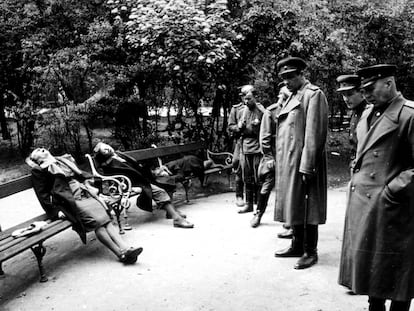The plane crash that killed a Nazi officer on a mysterious mission in Spain
New clues and a recent novel have revived interest in Colonel Alexander von Scheele, who died in 1939 when his aircraft smashed into a mountainside

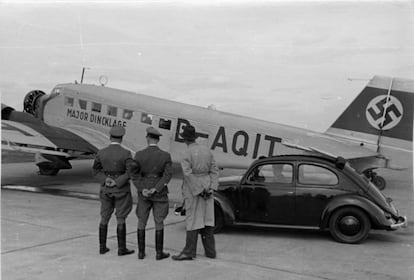
“I’ve spent 20 years investigating this, but I think there are some things we will never know,” says Antonio Valldeperes as he nudges the thick dossier he has compiled about the 1939 crash of a German Junkers Ju 52 airplane in the mountains of Llaberia, in Catalonia, Spain. The 78-year-old man seems tired but proud of his accomplishment, thwarted but not defeated. The dossier jostles his cup, spilling some of the coffee that thankfully misses his precious research.
Valldeperes has always been passionate about aeronautics and currently serves as vice president of the Catalan chapter of the Association of Aviators of the Republic (ADAR). In 2001, he made his first climb to the site where the “Hans Wende,” a Lufthansa Ju 52 plane (registration number D-AUJG and serial number 5942) crashed on August 4, 1939, between the municipalities of Colldejou and Tivissa at an altitude of 2,800 feet (850 meters). Valldeperes made several trips to the crash site and found plane debris and personal belongings, like a silver pocket watch and a Mercedes-Benz car key, which would cost a fortune in fees if it’s still in a parking lot somewhere. The plane was flying from the German city of Stuttgart to Madrid and made several stops along the way, the last one in Barcelona. Four crew members and three passengers were on board, all of whom died. One of the passengers was an important person – Colonel Alexander von Scheele – a 52-year-old commander of the Luftwaffe, the German air force. Von Scheele had been the first commander of the Condor Legion, a unit composed of military personnel from Nazi Germany, which fought with Franco’s Nationalist faction in the Spanish Civil War. What von Scheele was doing traveling on a civilian flight to Madrid less than a month before World War II broke out is yet another mystery.
Major von Scheele led the first Condor Legion contingent that arrived in Spain in July 1936 to support the right-wing rebels after the military coup that started the Spanish Civil War. It consisted of 25 officers, 66 non-commissioned officers, civilian technicians, radio specialists, mechanics and a medical officer. The Condor Legion used its fleet of Junker Ju 52 planes to airlift Franco’s Army of Africa from Morocco to the Spanish mainland, bypassing the enemy’s naval blockade. Each aircraft designed for 17 passengers was crammed with 45 Moroccan soldiers with all their equipment and even a few farm animals as live provisions.
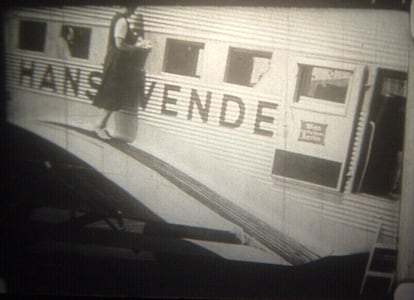
The three-engine Ju 52 made by German aviation company Junkers with its distinctive corrugated fuselage was one of the backbones of the Third Reich. Both civilian and military versions were widely used from 1932-1945. Hitler traveled in one during the presidential campaign that brought him to power and had two in his personal fleet when he ruled Nazi Germany. Hermann Goering had three of them. Nicknamed the “Tante Ju” (Aunt Ju) by some and “Hitler’s mule” by others, the Junker Ju 52 became a reliable workhorse for transporting troops and paratroopers during World War II. Years earlier, von Scheele authorized Lieutenant Rudolf von Moreau to use one of his Junker Ju 52s to bomb the “Jaime I” Republican battleship on August 13, 1936, at the onset of the Spanish Civil War. The planes would later be used in bombing runs that decimated the Basque town of Guernica and Warsaw.
“The first time I hiked into the mountains and found debris from the plane crash – that’s when my obsession began,” said Valldeperes. The crash had been largely forgotten, but he and some other history buffs began unraveling the story. One – Pablo Ruiz – even created a cockpit-view simulation of the final minutes of the doomed flight. “I began putting together pieces of the story and collecting fragments from the aircraft. I dug up newspaper accounts, the official German and Spanish reports, the death certificates... and I tried to reconstruct what happened,” said Valldeperes. The plane had run into bad weather and strong downdrafts. Although Captain Frederick Mack was a very experienced pilot, he crashed on the crest of a mountain ridge known as Canal del Roc. One of the wings hit first and caused the airplane to lose control and crash. The wreckage is still visible on the mountain. People from nearby towns have told how they saw the airplane flying at a low altitude, followed by a flash of light and an explosion. Some said a wheel rolled down the mountain.

Everyone aboard was killed instantly. “Reports indicate that the bodies were in pieces, and we have even found some tiny bones,” said Valldeperes. “The remains were taken to Barcelona, and a mortuary chapel was set up at the German School. Von Scheele’s remains were repatriated, and his burial in Germany was attended by Goering himself, who somewhat resembled the colonel. People who lived nearby ransacked the crash site for anything useful, and scrap dealers hauled away the metal wreckage. We made about 20 visits with metal detectors. We found numerous items of historical interest, such as a piece of the engine with the serial number, a seatbelt buckle, a suitcase lock, pieces of plexiglass, light bulb fragments, part of the plane’s compass, buttons from the crew’s uniforms and more. We also found an earring belonging to the only woman aboard – Rosario Valdivia, a Spaniard from Seville. She was traveling with her husband, a German businessman named Hans Walter Kirchner. We tried to locate relatives of the victims to give them these personal belongings, but we haven’t been able to find any. We know that von Scheele’s widow was in Barcelona at the mortuary chapel and had a cross placed at the crash site. It’s still there – just a plain cross engraved with the date of the accident. The Mercedes-Benz car key probably belonged to the colonel.”

There is much speculation about the crash – some say it was overloaded with potatoes to sell on the black market, while others say it had made several unscheduled stops. But most of the speculation swirled around why von Scheele was in Spain. Valldeperes is sure he was there on a secret mission, possibly to meet Spanish military officers and discuss the impending world war. Von Scheefe was traveling unaccompanied and was dressed in civilian clothing. As far as anyone knows, no documents the officer might have been carrying have ever been recovered. “We don’t know the purpose of his travel, and we haven’t found any records that might explain the trip. But I don’t think he was coming to Spain on vacation. He had contacts with the Spanish Army, including many generals, and spoke the language perfectly. My theory is that his mission was related to Spain’s potential participation in the war that was about to break out.”
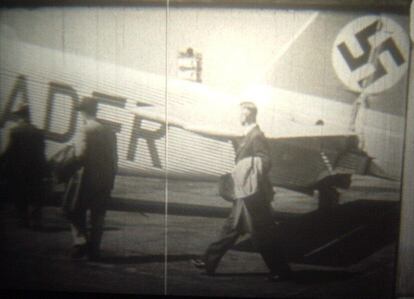
Valldeperes doesn’t believe that von Scheefe’s plane was attacked, which was the scenario described with great imagination in El Graal de Montserrat (The Monserrat Grail, in English), a recent novel by the well-known Catalan historian and social scientist Xavier Hernández. In the book, von Scheele, “hero of the Condor Legion and the Abwehr’s strongman in Spain,” is tasked by Heinrich Himmler to help Nazi SS experts search for the Holy Grail in the Montserrat monastery near Barcelona. A skeptical von Scheefe boards the Ju 52 at Stuttgart airport on that fateful day, dressed in his blue-gray Luftwaffe uniform and carrying a briefcase with maps and clues to finding the grail. Also on board is a beautiful Nazi double agent named Herta, who attracts the flirtatious attention of the colonel. Herta’s treasonous mission is to eliminate the colonel. She pulls out two Luger pistols and shoots everyone onboard, then parachutes to safety as the corpse-laden Ju 52 keeps flying toward the Llaberia mountain ridge. “It’s a well-told story, but Xavi made it all up – pure fiction, of course,” said Valldeperes, a good friend of the author. He seems frustrated to be unable to tell the real story of what happened.
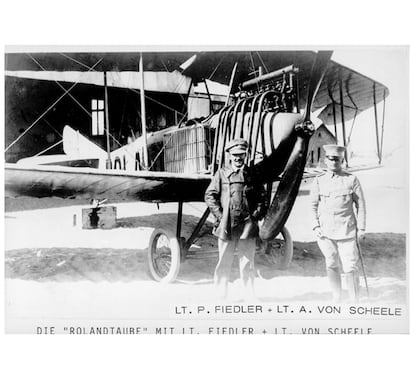
“I wish we could find out more,” said Valldeperes. Inspired by his perseverance, I began my own search for clues and was able to add a few facts to the historical record. Hans Wende – the man the Ju 52 was named after – was a German pilot who fought in World War I. He later flew for a Dutch company called NAVO and, in 1926, joined Lufthansa, the German flag carrier. I was even able to find several photos of him and some unpublished images of the namesake plane taken at Tempelhof airport in Berlin. As for von Scheefe, I discovered some interesting facts and pictures about the man’s life before commanding the Condor Legion. Like other officers in the future Luftwaffe led by Hermann Goering, von Scheefe was a pilot in World War I. However, von Scheefe was stationed in remote Namibia (southwestern Africa), a German colony at the time. This posting to Namibia may explain his close relationship with Goering, whose father – Heinrich Ernst Goering – was colonial governor of German South West Africa in the late 19th century.
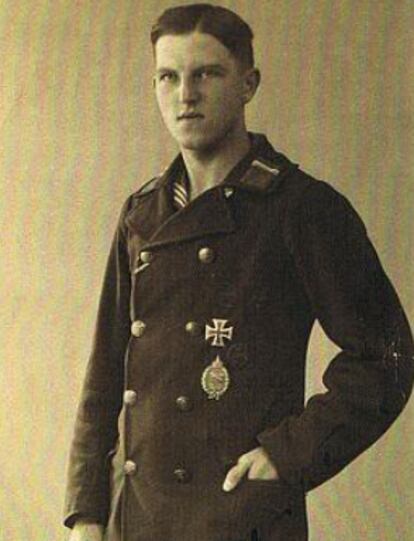
After obtaining his pilot’s license, a 27-year-old Lieutenant Von Scheele arrived in Africa in 1914 as commander of the Schutztruppe’s (the German imperial colonial army) new air force. It was a bare-bones outfit – two aircraft (an Aviatik and a Roland biplane) and three pilots, one of whom was Austro-Hungarian. Von Scheefe flew numerous reconnaissance and bombing missions over South African enemy lines, although he never engaged in aerial combat. In 1915, he was injured in an accident and didn’t recover in time to fly again before the end of the campaign. When British forces from South Africa seized control of Namibia, they held von Scheefe as a prisoner of war in Okahandja until the end of the war. Following his release, von Scheefe emigrated to Argentina, where he presumably learned Spanish. He returned to Germany and joined the fledgling Luftwaffe, a story that continues with his command of the infamous Condor Legion and ends abruptly in the Llaberia mountains. To be continued… with any luck.
Sign up for our weekly newsletter to get more English-language news coverage from EL PAÍS USA Edition
Tu suscripción se está usando en otro dispositivo
¿Quieres añadir otro usuario a tu suscripción?
Si continúas leyendo en este dispositivo, no se podrá leer en el otro.
FlechaTu suscripción se está usando en otro dispositivo y solo puedes acceder a EL PAÍS desde un dispositivo a la vez.
Si quieres compartir tu cuenta, cambia tu suscripción a la modalidad Premium, así podrás añadir otro usuario. Cada uno accederá con su propia cuenta de email, lo que os permitirá personalizar vuestra experiencia en EL PAÍS.
¿Tienes una suscripción de empresa? Accede aquí para contratar más cuentas.
En el caso de no saber quién está usando tu cuenta, te recomendamos cambiar tu contraseña aquí.
Si decides continuar compartiendo tu cuenta, este mensaje se mostrará en tu dispositivo y en el de la otra persona que está usando tu cuenta de forma indefinida, afectando a tu experiencia de lectura. Puedes consultar aquí los términos y condiciones de la suscripción digital.
More information
Archived In
Últimas noticias
Most viewed
- Oona Chaplin: ‘I told James Cameron that I was living in a treehouse and starting a permaculture project with a friend’
- Reinhard Genzel, Nobel laureate in physics: ‘One-minute videos will never give you the truth’
- Sinaloa Cartel war is taking its toll on Los Chapitos
- Why the price of coffee has skyrocketed: from Brazilian plantations to specialty coffee houses
- Silver prices are going crazy: This is what’s fueling the rally
